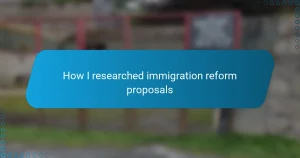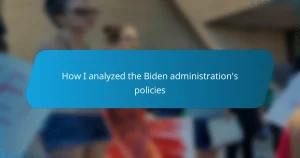Key takeaways
- Healthcare reforms impact individuals and communities beyond cost and access, emphasizing the importance of understanding their real-life implications.
- Key evaluation factors include balancing cost with quality, ensuring equitable access, and considering the practicality of implementing reforms.
- Utilizing frameworks like stakeholder analysis and systems thinking can clarify the complexities of healthcare policies and their effects on the entire system.
- Personal values and empathy are essential in assessing reforms, as they help gauge the human cost alongside statistical data.
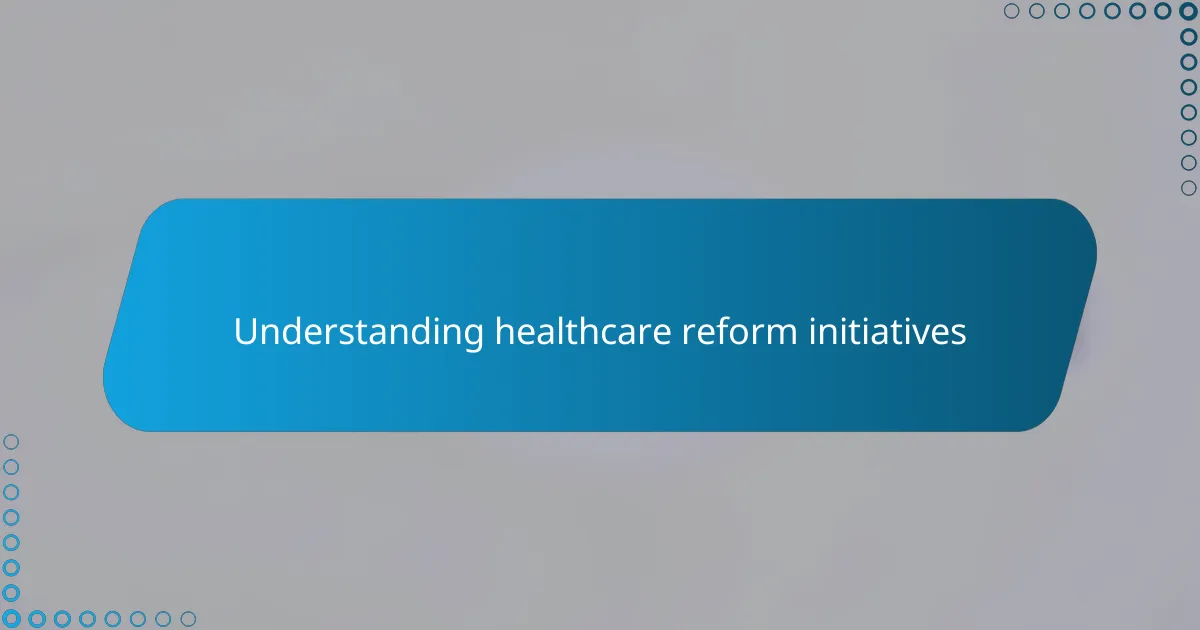
Understanding healthcare reform initiatives
When I first started evaluating healthcare reform initiatives, I realized how complex and layered these policies truly are. It’s not just about cost or access; it’s about how these changes ripple through lives, impacting families and communities on a very personal level. Have you ever wondered why some reforms gain support while others face fierce resistance?
From my experience, understanding these initiatives means looking beyond the headlines and political spin. I found it helpful to break down the goals of each proposal—whether it’s expanding coverage, controlling costs, or improving care quality—and then assess how realistically those goals can be achieved. Sometimes the numbers tell one story, but the real challenge is grasping what those numbers mean for everyday people.
It’s easy to get lost in the jargon, but asking simple questions like “Who benefits?” and “Who might be left behind?” helped me connect the dots. These reflections turned what initially seemed like dry policy debates into urgent, human stories that demand thoughtful analysis. Engaging with healthcare reform this way made me appreciate its profound significance in shaping our society’s future.
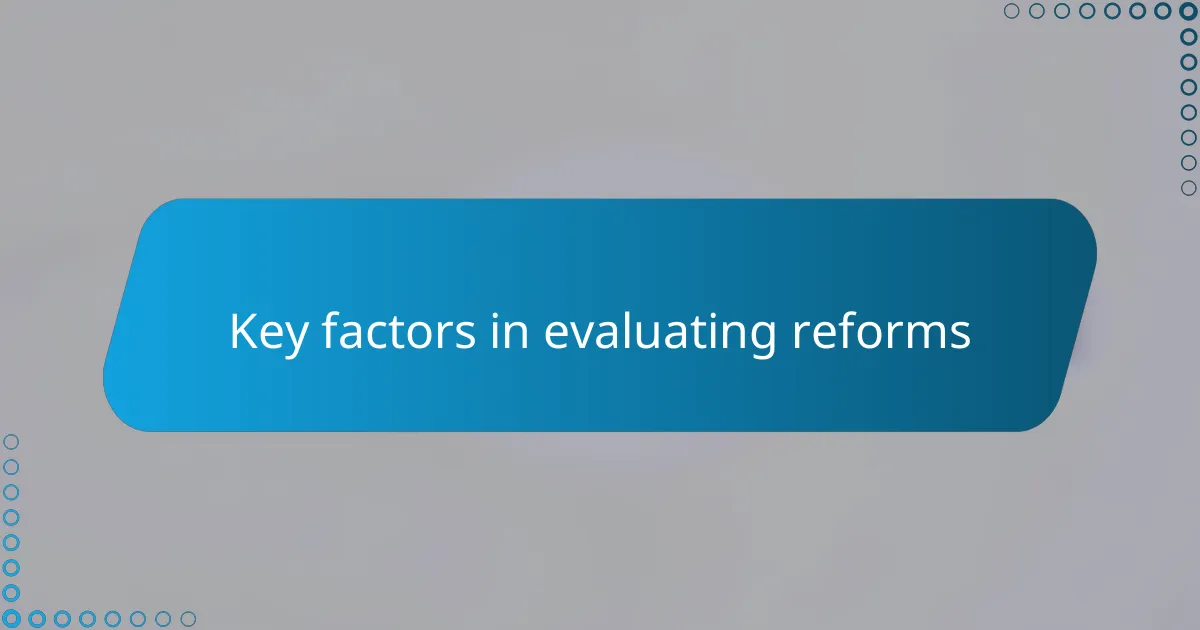
Key factors in evaluating reforms
One of the key factors I focused on was the balance between cost and access. It’s tempting to celebrate reforms that promise cheaper care, but I kept asking myself: at what expense? Sometimes lower costs come with reduced quality or limited provider choices, and those trade-offs have real consequences for patients I know.
Another crucial aspect I paid attention to was how reforms address equity. Who truly benefits from these initiatives? I recall feeling uneasy when a proposal promised broad coverage but seemed to leave out vulnerable communities, like rural populations or those with chronic illnesses. Equity isn’t just a buzzword—it’s about fairness in who gets care and how well that care meets diverse needs.
Lastly, I considered the practicality of implementation. A reform might look great on paper, but will it work in the messy reality of our healthcare system? I often thought about the experiences of doctors and nurses I’ve talked to—would these changes make their jobs harder or easier? Evaluating reforms through that lens helped me see beyond policy rhetoric to the everyday realities shaping patient outcomes.
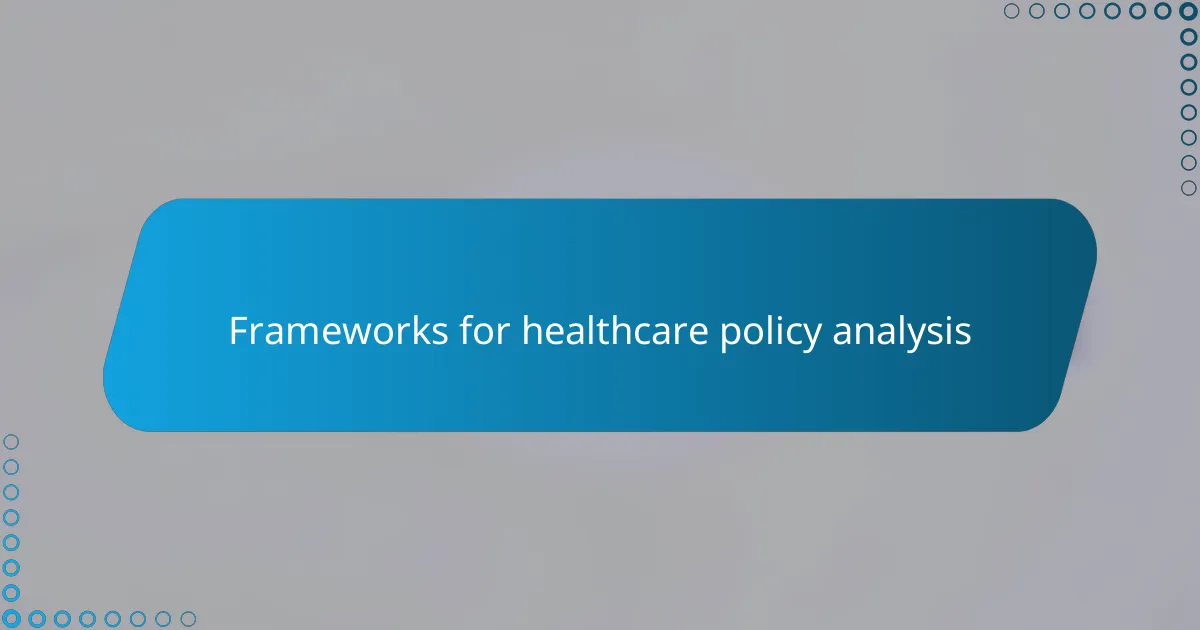
Frameworks for healthcare policy analysis
When I first encountered frameworks for healthcare policy analysis, I noticed they provide a structured way to untangle complicated reforms. These frameworks, like cost-benefit analysis or the equity lens, helped me focus on specific parts—whether it’s dollars saved or fairness in access—and kept me from getting overwhelmed by all the moving pieces.
One framework that really stuck with me was the stakeholder analysis. Asking, “Who holds the power here? Who stands to gain or lose?” made the political dynamics behind reforms much clearer. It’s fascinating how understanding these relationships often reveals why some policies stall while others speed ahead.
I also found systems thinking invaluable. Instead of looking at reforms as isolated fixes, this approach urged me to consider how changes ripple through the entire healthcare ecosystem. It reminded me of a lesson from the hospital where I once volunteered—small shifts in insurance rules can cascade into longer wait times or staffing shortages, affecting real people in unexpected ways. Have you ever seen a single policy cause a chain reaction like that? That’s the complexity frameworks help reveal.
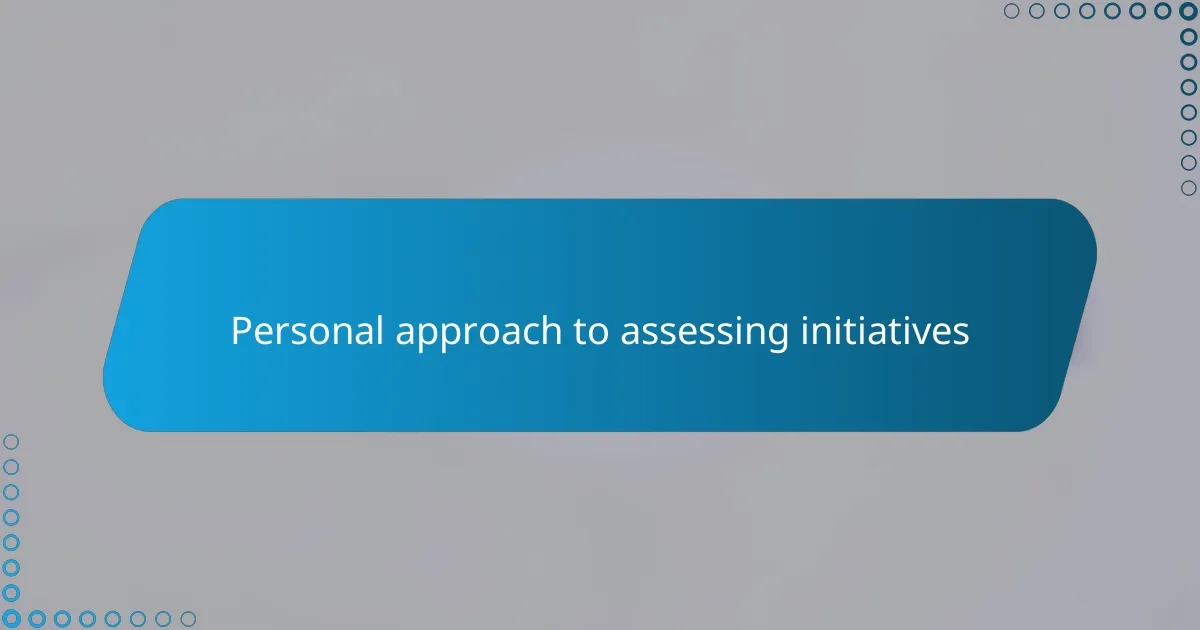
Personal approach to assessing initiatives
When I assess healthcare reform initiatives, I start by grounding myself in her personal values—I ask which outcomes truly matter to me and why. For example, I often reflect on conversations with friends who struggle to access affordable care, which reminds me that policies are not abstract ideas but lifelines for real people.
I devour reports and data, but I also rely heavily on intuition shaped by years of observing how policy shifts affect individuals. Have you ever noticed how a seemingly small change in coverage rules can upend a family’s financial stability? Those moments make me weigh the human cost as heavily as the statistics.
Ultimately, I try to blend rigorous analysis with empathy. This means questioning if an initiative might leave certain groups behind, even if it looks successful on paper. It’s challenging but rewarding to balance the cold logic of policy with the warm urgency I feel for those impacted.

Challenges faced during evaluation
One of the biggest challenges I faced during evaluation was sifting through conflicting data and partisan narratives. It often felt like no matter where I looked, the numbers told different stories depending on who was presenting them. Have you ever tried to find clear answers in a sea of political spin? It’s exhausting and sometimes discouraging.
Another tough hurdle was grappling with the unintended consequences that no one seemed to acknowledge openly. For instance, a reform aimed at expanding coverage might inadvertently burden small rural hospitals, leaving communities more vulnerable. I remember talking to a nurse who described how staffing shortages worsened just months after new policies rolled out—these real-world impacts are easy to overlook but vital to understand.
I also found it difficult to measure equity in tangible terms. How do you quantify fairness when it depends on so many variables—geography, socioeconomic status, pre-existing conditions? It made me question whether any evaluation could ever fully capture who truly benefits and who’s left behind. That uncertainty was frustrating but pushed me to look deeper and keep asking tough questions.
